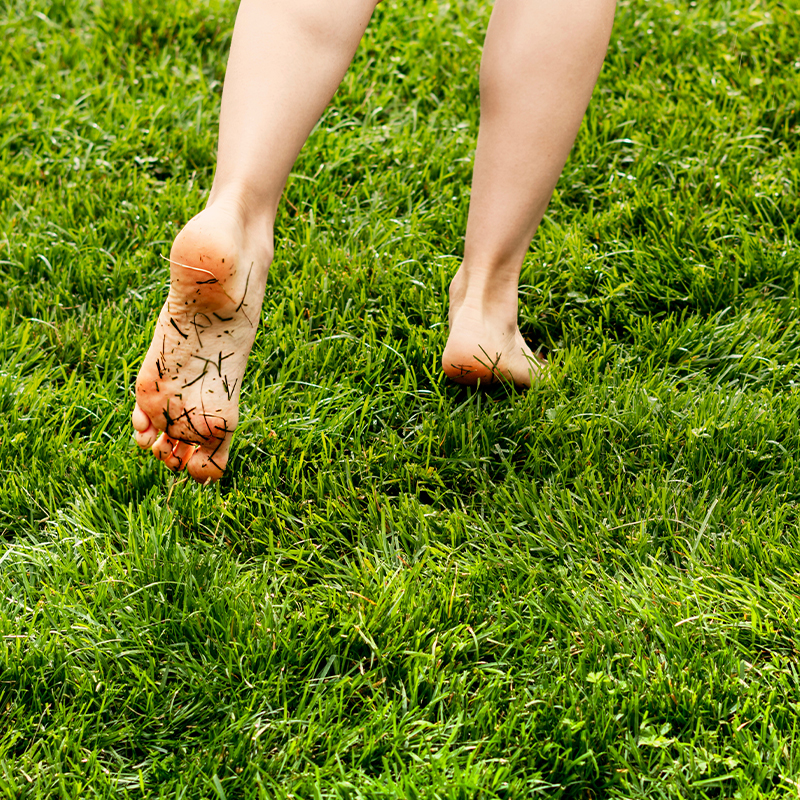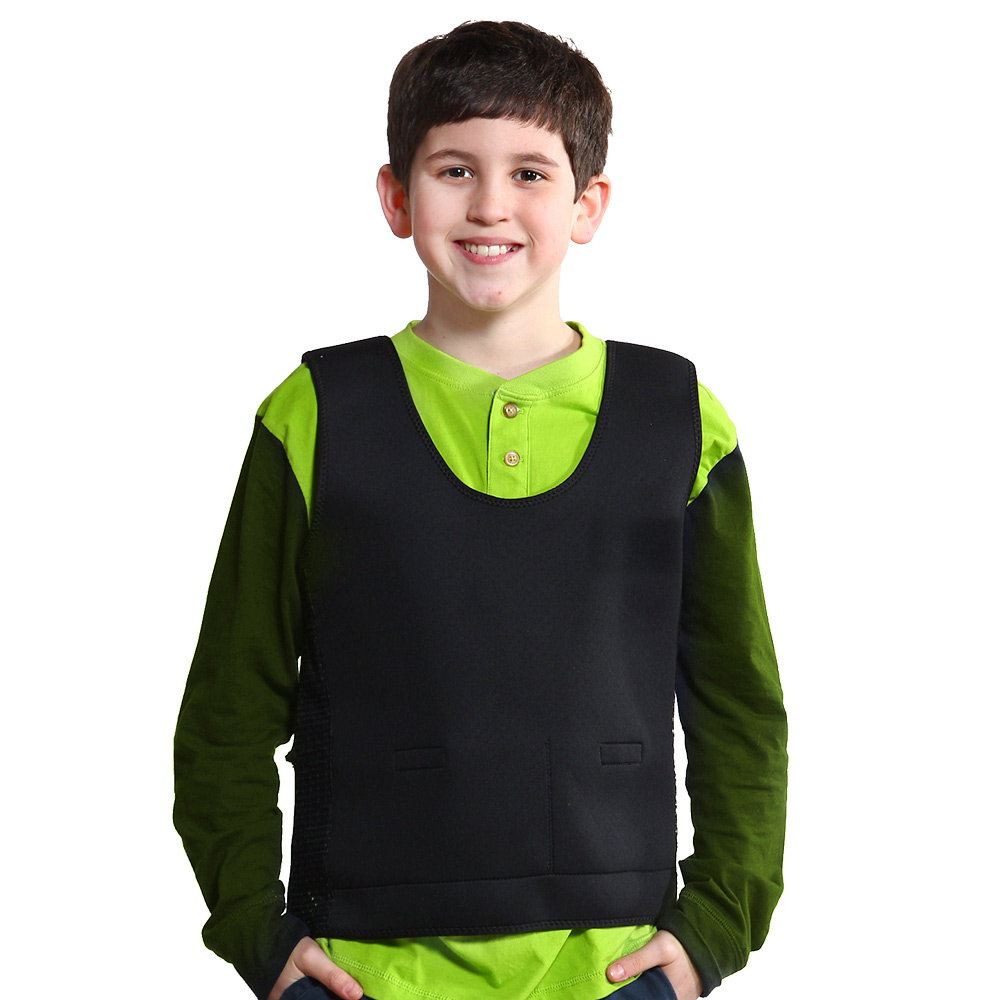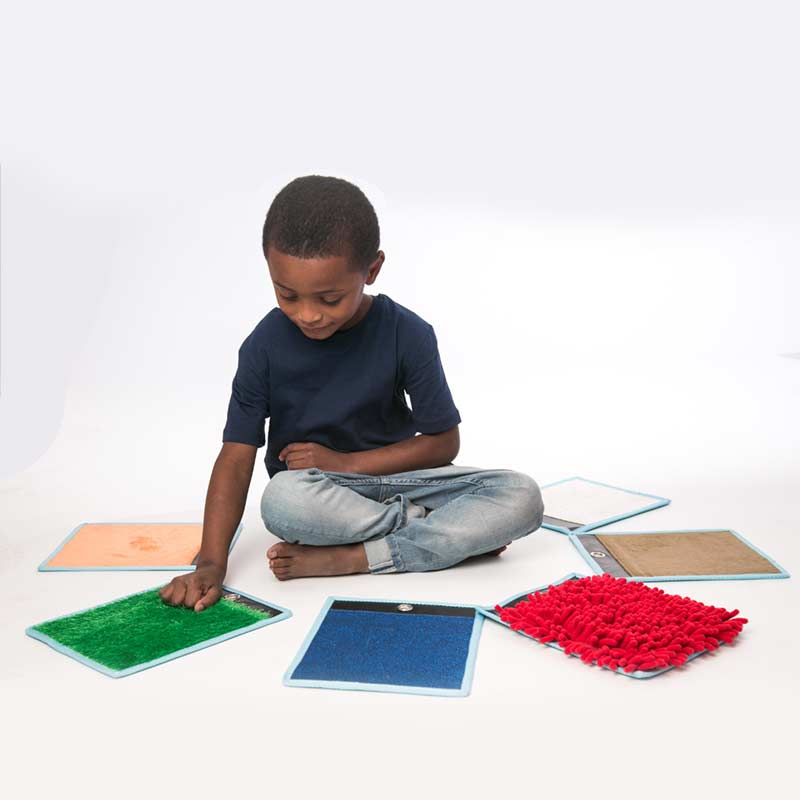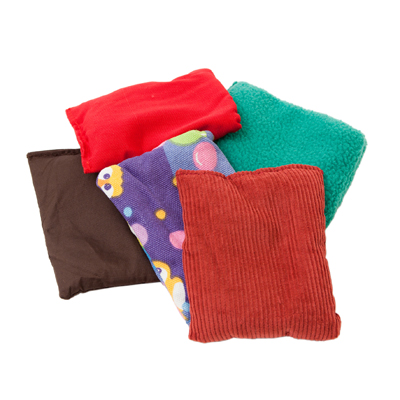Touch, or tactile processing, is one of our 8 senses. It allows us to process information from our surroundings through receptors on our skin. Our tactile sense responds to touch, pressure, pain, vibration and temperature.
What is Tactile Defensiveness?
Some children experience touch that is usually positive or neutral as negative. Their tactile system puts their bodies in a defensive mode, causing a fight-or-flight response when they are touched. For example, if a friend taps them on the shoulder, they might jump in alarm. When you suddenly reach over to hug your child, they might push you away. Their sensory system is perceiving these forms of touch as negative input.

This hypersensitivity to touch sensations is referred to as tactile defensiveness. Kids with tactile defensiveness may not like casual touch such as brushing against someone in a crowded space. This can make it difficult to stand in line where they might be jostled by others. Wearing certain types of fabric, walking barefoot on the grass, or an unexpected touch from someone, can cause them to have a big defensive reaction.

Pain and light touch are both alerting sensations. We typically pull away if we touch a hot stove. A leaf grazing your ankle might initially startle you, but your brain typically processes this as just a leaf, so you brush it away and your sensory system quickly regulates. However, a child with touch hypersensitivity will not be able to process this touch as non-threatening and ignore the sensation. They go into flight/fight/freeze mode, perceiving every little touch as a threat.
Strategies To Regulate From Tactile Overwhelm
One way to help regulate their sensory system when they get overwhelmed by touch is with firm or deep pressure input. Wearing a weighted vest or compression shirt can be a great way to reduce negative touch sensations. A weighted blanket can help them fall asleep and feel comfortable in bed. Tight bear hugs, with permission, are also usually better than a light unexpected squeeze. Heavy work such as climbing or pushing a heavy bin of books can also be regulating for a person who has tactile defensiveness.
Some ways to avoid tactile meltdowns caused by clothing include cutting out all tags in clothing, buying seamless clothing and underwear, or turning items inside out so that the seam is not directly touching the skin. Tight clothing often feels better because it does not shift, which would give lots of light touch sensations throughout the day. Give a child independence to pick out clothing that feels good for them to help reduce sensory overload.
Brushing teeth, cutting nails, and getting a haircut are other activities that can be difficult for kids with tactile processing disorder. Preparing your child for what lies ahead with a social story, giving them some control through choices can help to get the tasks done. If you need to spread out the task over a longer period of time so that you don’t surpass their sensory threshold.
You might also be able to help a child regulate touch sensations by allowing them to explore different textures such as sensory mini mats and textured bean bags. Sensory bins are also a good way to explore textures. Placing small pieces and tools in the bins will encourage them to play with it and experience all of the textures.
Join Your Child's Journey
Remember, it’s important never to impose sensory input on a child. Make it available to them to explore at their own pace, so that they don’t become more wary and hypersensitive to tactile sensations. You can get involved in the journey with your child and explore textures with them. Try talking about the various tactile sensations and how they make your child feel as they work on reducing tactile defensiveness.
Check out our variety of sensory tools to provide tactile stimulation.
How do you help your child with tactile defensiveness self-regulate? Share your experiences and ask any questions in the comments or reach out to us at customercare@funandfunction.com.
This post was originally posted on 01/03/2023 by Malkie Ward, OTR/L. It was updated for accuracy and comprehensiveness on 2/5/2023.






















Comments